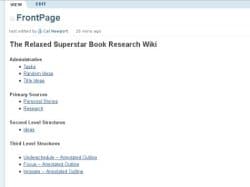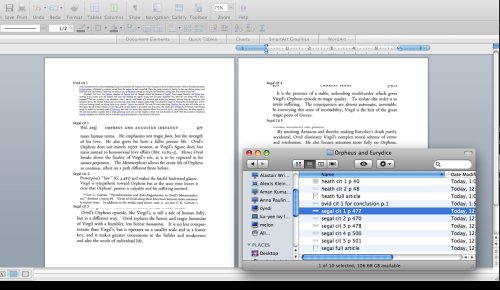Beyond Databases
Back in the early days of Study Hacks, I introduced the paper research database. The idea was to build a database of every quote you might need to cite in your paper. These citations could be sorted by date or type, and be linked to their matching source. The technique works because it helps you build and organize a comprehensive understanding of an event or idea before you start writing about it.
I should be clear: I love this technique. I used it to write two massive art history research papers while here at MIT. Recently, however, when I began the research process for my new book, I found myself drawn to a new strategy: the paper research wiki.
In this post I want to explain this approach, which has the potential to significantly improve the complexity and confidence of your written arguments.



